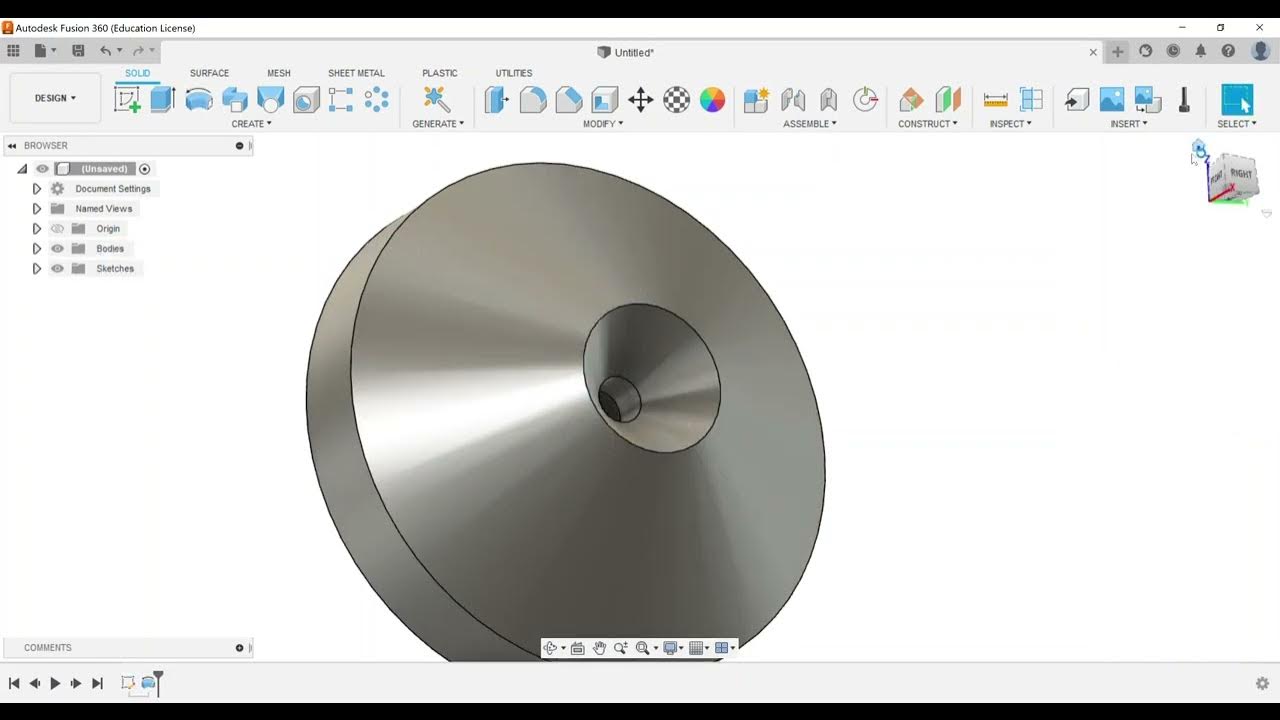How To Draw PEOPLE Quickly In Groups | Urban Sketching Tutorial
Summary
TLDRIn this tutorial, Scotty demonstrates how to quickly sketch small groups of people using a loose, impressionistic style. He recommends starting with one figure as a reference for proportions and ensuring all figures are consistently sized. Using simple shapes for the head, torso, and legs, he teaches how to sketch figures with fluid lines and minimal detail, focusing on key features like the face and limbs. Watercolor is applied dynamically, using rough strokes for color and shadow to enhance the sketch. The tutorial emphasizes capturing the essence of the scene rather than perfect accuracy, offering valuable tips for rapid figure drawing.
Takeaways
- 😀 Start by selecting one figure as a reference for all other figures to ensure they belong to the same scene.
- 😀 Use simple proportions when sketching: the head, torso, and legs should have specific relative sizes (head is the smallest, torso about 3 heads tall, and legs around 1.5 heads).
- 😀 Begin with a loose and continuous outline of the figure, avoiding precise measurements to capture the overall form.
- 😀 Simplify facial features by dividing the face into three sections: hairline, brow, and nose/chin.
- 😀 Sketch each body part in segments (head, torso, limbs) and adjust proportions based on visual observation, not strict measurements.
- 😀 Once the figure is sketched, focus on adding context, such as objects or surrounding figures, using basic shapes.
- 😀 Ensure that the second figure is drawn with the same size and proportion as the first, keeping the heads and body shapes consistent.
- 😀 Use watercolor to quickly block in general shapes with light washes, emphasizing loose strokes and leaving white space for highlights.
- 😀 After drying, add shadows to the right side of objects to create depth and contrast, using a preferred shadow color like purple Lake.
- 😀 Enhance the sketch with dark spots and highlights to draw the viewer's attention to key areas and add visual interest.
- 😀 The tutorial offers a quick and dynamic approach to sketching people and capturing their impression, with an emphasis on efficiency and loose techniques.
Q & A
What is the main focus of this tutorial?
-The main focus of the tutorial is teaching how to quickly and loosely sketch small groups of people, using basic shapes and loose lines to capture their positions and proportions.
Why is it important to start with one figure in the scene?
-Starting with one figure helps to establish a reference for the proportions and positioning of the other figures in the scene, ensuring they all appear to belong together in the same environment.
What basic shapes are used to sketch the figure in this tutorial?
-The basic shapes used are the head, torso, and legs. These shapes help establish the overall structure and proportions of the figure.
How does Scotty recommend determining the proportions of the figure?
-Scotty recommends using a rough estimate for the proportions of the figure, such as the torso being approximately three heads in length, and the legs being about one and a half heads long, without overthinking the measurements.
What is the significance of using continuous lines in the sketching process?
-Using continuous lines helps to keep the sketch loose and fluid, allowing for quick adjustments and capturing the general shape without getting bogged down by details.
How does Scotty simplify the process of drawing faces in the sketches?
-Scotty simplifies faces by breaking them into basic shapes and proportions, focusing on key features like the brow, nose, and mouth, and avoiding intricate details.
What is the approach to sketching the limbs and hands?
-For the limbs and hands, Scotty uses simple shapes and rough lines, focusing on the general positioning and structure rather than precise details, and sometimes omitting fingers if they are not clearly visible.
What role does watercolor play in this tutorial?
-Watercolor is used to add color and depth to the sketch. Scotty begins with a light wash to block in the shapes and later adds shadows and layers to enhance the dynamic feel of the scene.
How are shadows incorporated into the sketching process?
-Shadows are added using colors like purple Lake, applied to the side of objects away from the light source. This helps create depth and contrast, making the figures stand out more in the scene.
What are the final steps in completing the sketch?
-The final steps involve adding dark spots for contrast, highlights for emphasis, and impressionistic background elements to bring the entire sketch together and create a cohesive scene.
What is the significance of the tutorial being available on Patreon?
-The full version of the tutorial, including additional figures and in-depth explanations, is available on Patreon, where viewers can also access a community for feedback and voting on future tutorials.
Outlines

هذا القسم متوفر فقط للمشتركين. يرجى الترقية للوصول إلى هذه الميزة.
قم بالترقية الآنMindmap

هذا القسم متوفر فقط للمشتركين. يرجى الترقية للوصول إلى هذه الميزة.
قم بالترقية الآنKeywords

هذا القسم متوفر فقط للمشتركين. يرجى الترقية للوصول إلى هذه الميزة.
قم بالترقية الآنHighlights

هذا القسم متوفر فقط للمشتركين. يرجى الترقية للوصول إلى هذه الميزة.
قم بالترقية الآنTranscripts

هذا القسم متوفر فقط للمشتركين. يرجى الترقية للوصول إلى هذه الميزة.
قم بالترقية الآن5.0 / 5 (0 votes)






